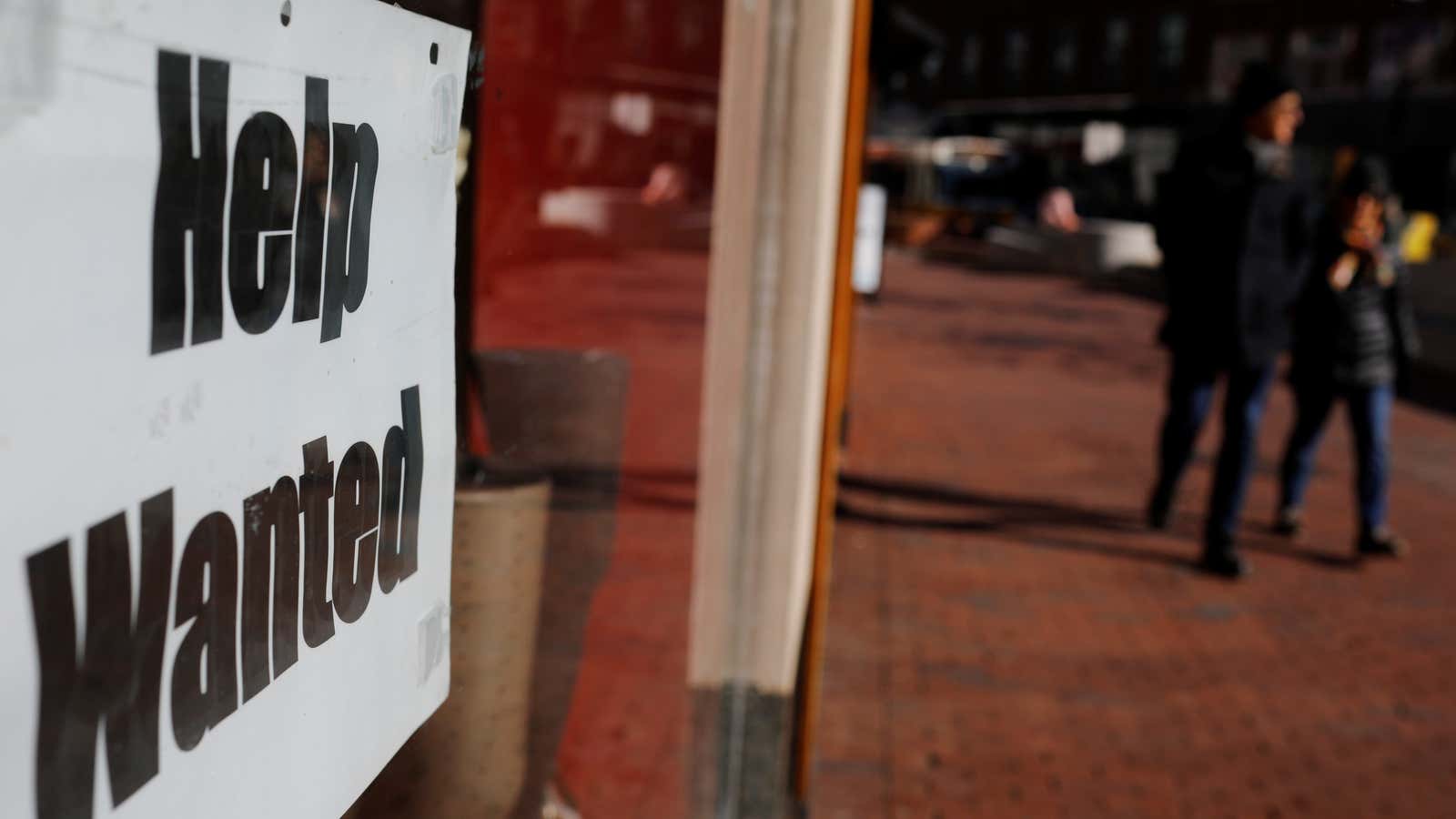America’s unemployment rate is brushing historical lows once again, as the United States’ closely-watched jobs data report revealed on Friday. Hiring continues to steam ahead. Given all that, you’d expect wages to continue on a steady upswing.
Weirdly, though, that’s not the case. Wages for private-sector workers rose 2.9% in September over the same month in 2018. That’s the slowest pace of growth since July 2018. More worryingly, though, there are signs that the trend in wage growth is decelerating, notes Jared Bernstein, a left-leaning economist.
Things look brighter for earners in the middle tier of earners (that is, non-managers and blue-collar workers). In September, their wages grew at the brisk clip of 3.5%. But the pace of growth in that demographic seems to be flattening too, says Bernstein.
Wage data are notoriously noisy and prone to revision. For example, Ian Shepherdson, economist at Pantheon Macroeconomics, sees a pattern that’s virtually the opposite. “The underlying trend in wage growth remains upwards… as signaled by every leading indicator,” he said in an email to Quartz on Friday.
This wage-growth Rorschach foists some tough decisions on the Federal Reserve Open Market Committee, which decides later this month whether to cut rates for a third time this year. It also highlights the increasingly precarious state of the US economy, as its expansion depends on consumers’ feelings.
If, as Shepherdson argues, wages are steadily growing, inflation will soon start climbing. If that happens, the Fed will be forced to abruptly reverse course and hike rates.
The fact that consumption drives around two-thirds of US GDP makes the rate decision tricky, though. With business investment flagging, consumer spending is the only economic engine that’s really firing right now. Keeping it running depends in large part on rising incomes. September’s wage data hint that the outlook there is dimming, argues Sarah House, economist at Wells Fargo.
“With demand for labor softening and many companies contending with higher input costs as the trade war lingers and broadens, we do not expect to see any meaningful strengthening in wage growth in the coming months,” wrote House in an email on Friday. “Along with slower hiring, income growth is likely to moderate as a result and contribute to slower consumer spending.”
If she’s right, and stalling wage growth reflects companies’ cautiousness, rates cuts might not do much, however.
Money is already fairly cheap and, after an unusually long expansion, corporate debt levels are also quite high. Plus, interest rates aren’t the only factors behind investment decisions; companies also have to be confident that consumers will keep buying. Already, uncertainty caused by the trade war, as well as by slowing global growth, has discouraged firms from investing. Worse still, tariffs on a huge batch of retail goods are set to go into effect in December—posing a threat to consumer spending that even cheaper credit is unlikely to offset.
